Last Updated on May 20, 2023
South of Tallahassee, on Florida’s panhandle, St. Mark’s National Wildlife Refuge provides an oasis for migratory birds as well as a permanent home for many local birds and wildlife.
Stretching over 70,000 acres, across three counties and 40 miles of Florida’s Gulf coast, a slice of stunning beauty in northern Florida awaits the avid nature traveler. Read on to see all of our favorite things to do in St Mark’s!
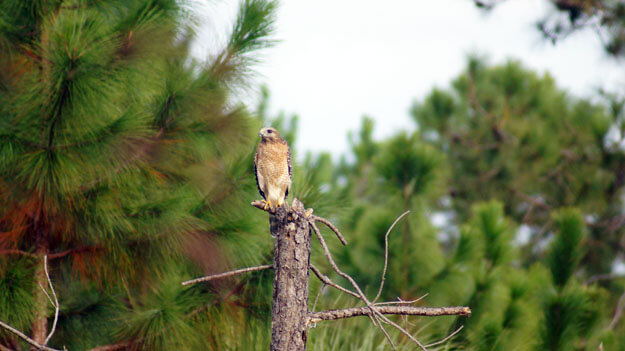
St. Mark’s National Wildlife Refuge
Considered one of the most desired birding spots in Florida, the refuge gives our feathered friends an exceptional reason to stop and rest after escaping the cooler northern temperatures.
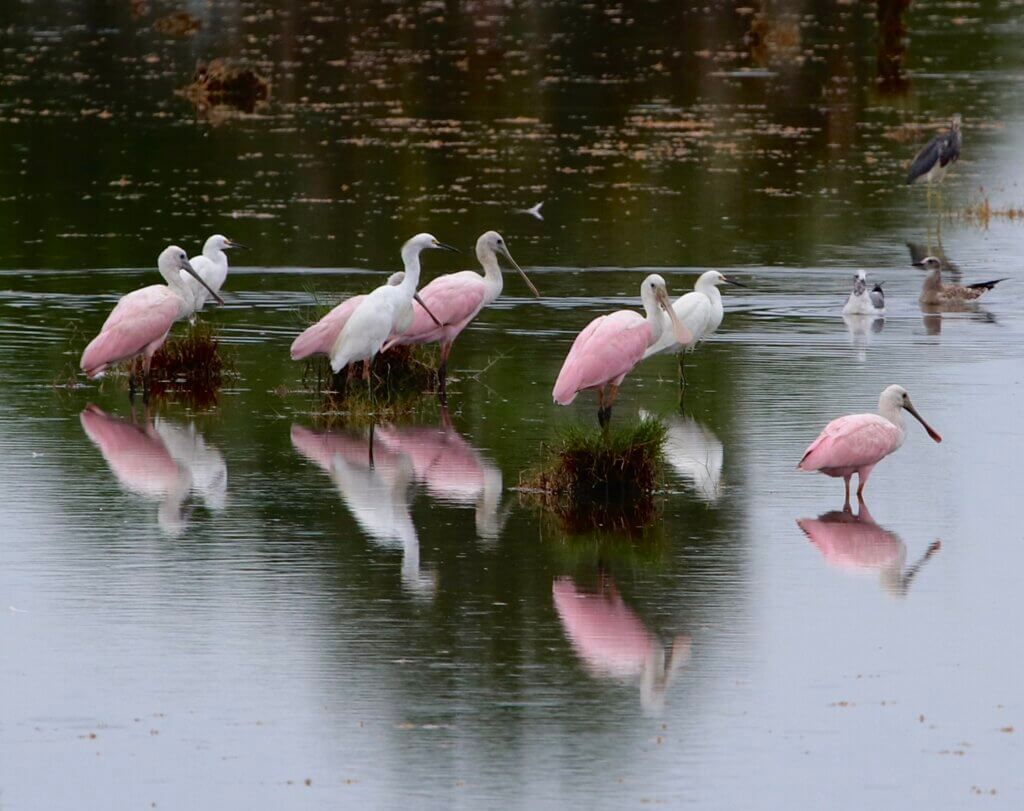
From October through spring, bird watching is premium at St. Mark’s with three hundred species of resident and seasonal visitors. Bald eagles, ducks, geese, hawks, falcons, and shorebirds are common.
Endangered and threatened species such as the least tern, swallow-tailed kite, whooping crane, peregrine falcon, red-cockaded woodpecker, and Wilson’s plover make this preserve their home.

Even if you’re not a birder, the refuge offers plenty of outdoors for play, whether hiking, biking, or sitting quietly on a bench. Vistas of wide-open blue skies contrast with the amber, brown, and green landscape of diverse natural habitats offering a respite from everyday life.

What are the sections of the refuge?
The St. Marks Wildlife Refuge covers a lot of territory on the state’s “big bend.” The full refuge has four sub-sections: The St. Mark’s area serves as the base for the Visitor Center and the St. Mark’s Lighthouse.
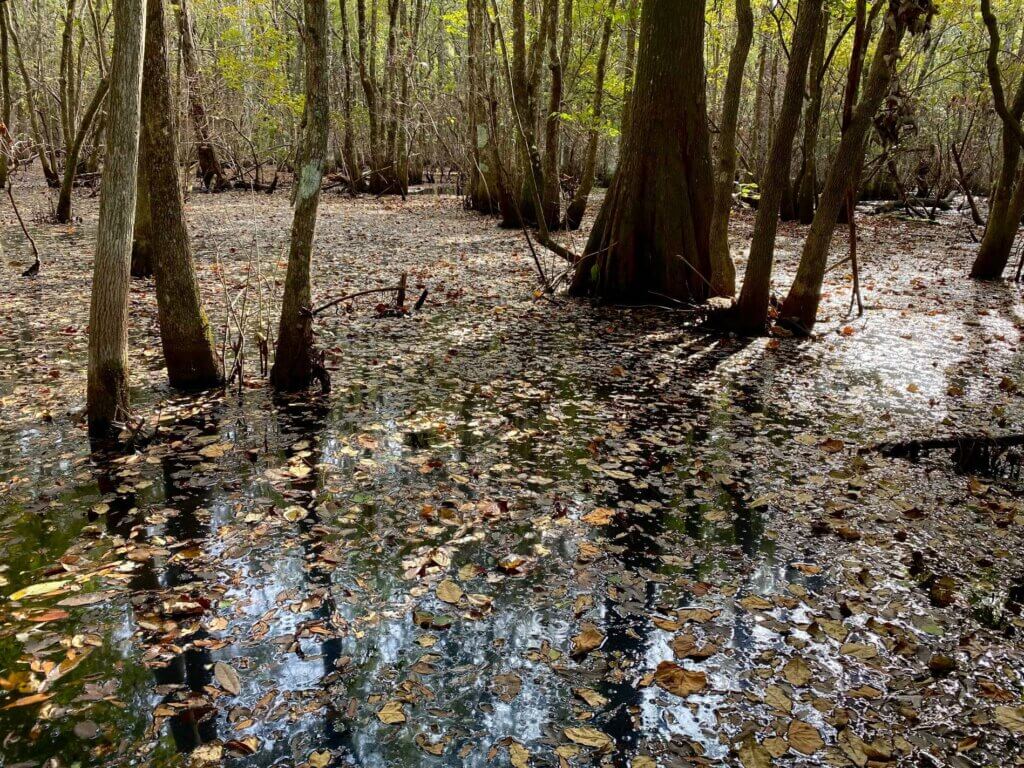
There you’ll find pine Flatwoods, swamps, and man-made pools, or impoundments, created for wildlife.
The other three areas are the Wakulla section containing hardwood hammocks, swamps, and more pine Flatwoods; the Panacea section, distinguished by tidal marshes, sandhills, and Flatwoods; and the Aucilla area, including the Aucilla River, swamp, and wetlands.

St. Mark’s National Refuge Lighthouse
Towering 80 feet high, the Lighthouse, constructed in 1842, was the third built at this site to assist ships navigating the difficult St. Marks River channel.
Through the years the historical lighthouse, with walls four foot thick at the base, survived hurricanes in 1843 and 1851, plus bombardment by Union navy ships and attempted destruction by Confederate troops during the Civil War.

The lighthouse is not open to the public, but you’ll see lots of waterfowl while admiring the tidal flats on the Bay. Native Florida plants are everywhere adding both color and interest and if you like to fish, flounder, redfish, and trout are reported to be plentiful in the area.
Many visitors bring kayaks for access to shallow-water fishing.
Biking and Hiking Trails

If you’re a bike enthusiast, this is an excellent place to ride, especially in the early mornings for wildlife viewing. Or if you enjoy hiking, you’ll see more birds by walking the variety of trails, most of which are relatively easy and under a mile long.
The Plum Orchard Pond Trail (behind the Visitor Center), Headquarters Pond Trail, and Towers Pond Trails are worth a trip. We particularly enjoyed the Towers Pond look-out while enjoying lunch. Lighthouse Pool and Cedar Point trails are coastal walks with plenty of birds about.
Wildlife at the refuge

Bobcats, raccoons, feral hogs, and black bears are just some of the wildlife that lives at the refuge. If you are curious or even fascinated with alligators, St. Marks is your place.
Gators are very plentiful and usually found in the impoundments, with the pathways above on levees, giving you room to safely view from above. Remember, the general rule is that alligators don’t bother you if you don’t bother them.
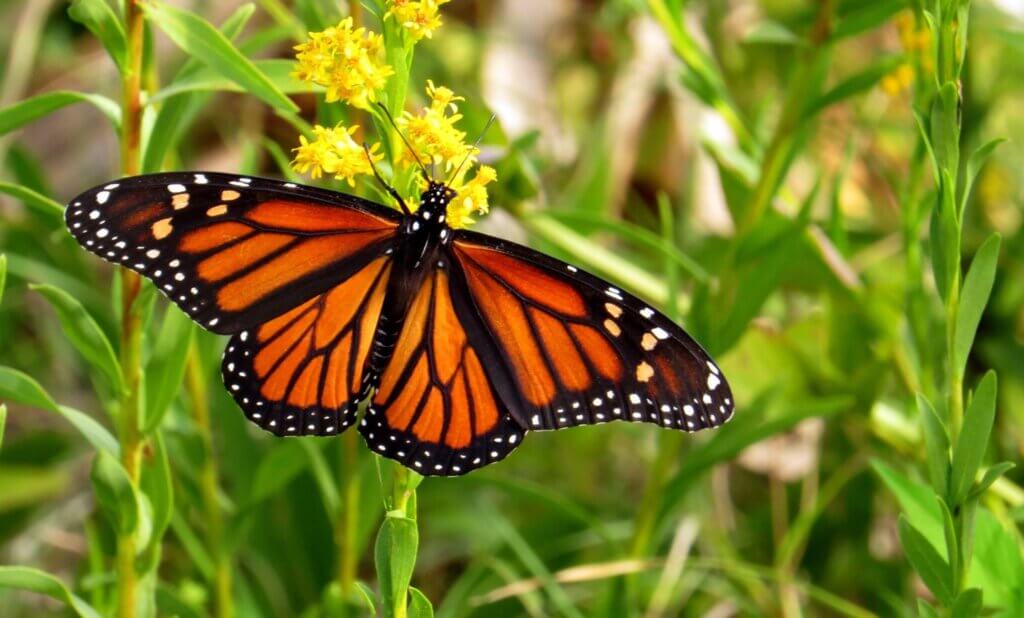
Birds get a lot of attention at St. Marks, but one of the big draws is the Monarch butterfly migration. The cooler northern temperatures send the monarchs south (around) the third week of October through mid-November.
Arriving at St. Mark’s on their way to Cuba and Mexico, they stop and refuel on the local milkweed nectar before they continue their journey south.
How to get to the refuge
To get there, travel Florida’s Coastal Highway (U.S. Hwy. 98) which parallels the coast south of Tallahassee. For the main St. Mark’s refuge take C.R. 59 into the park.
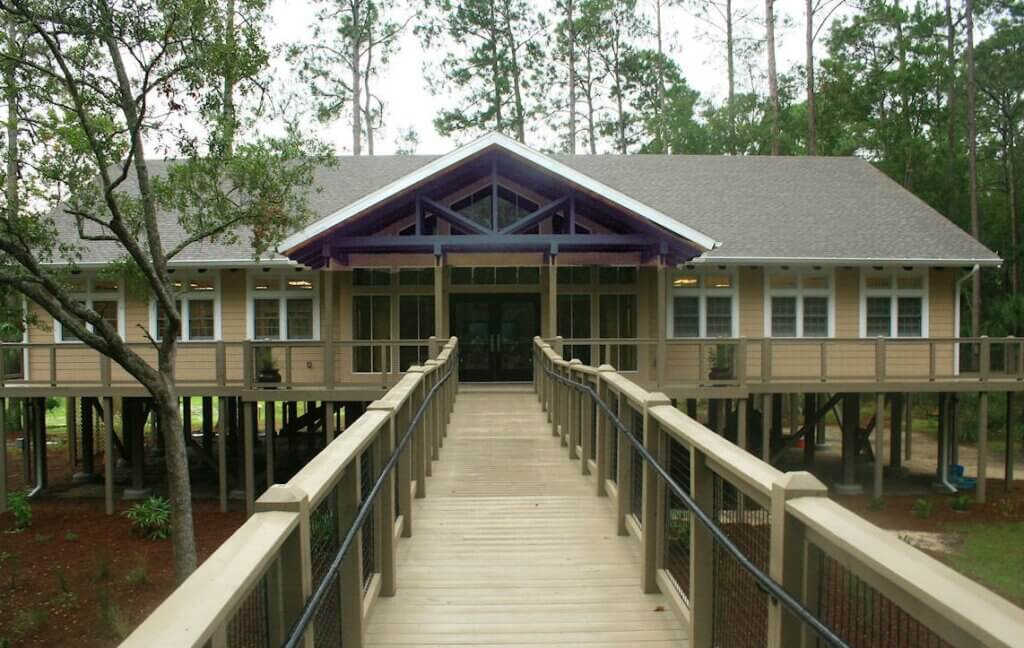
The Visitors Center is not far beyond the welcome gate and a good stop to gather maps and brochures. From the Visitors Center, the seven-mile Lighthouse Road (C.R. 59) takes you to Apalachee Bay where you’ll find the majestic St. Mark’s Lighthouse.
What to Bring
Be sure to bring your binoculars and camera. This is a great thing to do in St Marks, and you can take photos while enjoying one of Florida’s finest authentic places.
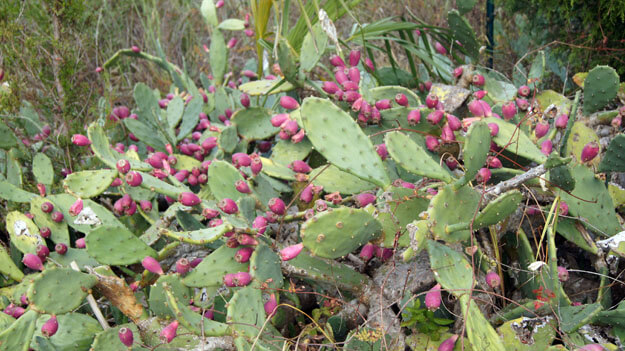
Interested in other lighthouses throughout Florida? Check out the St. Augustine Lighthouse + List of Florida’s Historic Lighthouses.
Don’t miss these other AuthenticFlorida articles:
- Getaway to Authentic Apalachicola
- Our Favorite Things to Do in Wakulla Springs
- Ten Authentic Things to do in Tallahassee, the “Other Florida”
- The 20 Best Historic Hotels in Florida
- A Sugary Beach on Florida’s Panhandle You’ll Want to Discover: St. Joseph Peninsula State Park
- A Visit to St. Vincent National Wildlife Refuge

